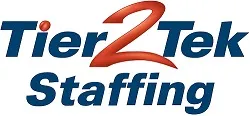Industrial Engineer Interview Questions with Answers

Industrial engineering plays a crucial role in optimizing complex systems, improving efficiency, and reducing costs across various industries. If you’re preparing for an industrial engineer interview, it’s essential to be ready for questions that test both technical knowledge and problem-solving abilities. Below are 15 commonly asked industrial engineering interview questions with short, impactful answers to help candidates prepare effectively.
Interview Questions and Short Answers
How do you handle resistance to process changes?
I involve employees early, explain the benefits, provide training, and collect feedback to ensure smooth adoption.
What is Industrial Engineering?
Industrial Engineering focuses on optimizing processes, systems, and resources to improve efficiency, productivity, and quality in production and service industries.
What tools do industrial engineers commonly use?
Tools include Lean, Six Sigma, simulation software, time studies, CAD, and statistical analysis tools like Minitab or Excel.
What is the difference between Lean and Six Sigma?
Lean eliminates waste and improves flow; Six Sigma reduces variation and enhances quality.
What is a bottleneck, and how do you address it?
A bottleneck is a stage in a process that limits overall output. I address it by analyzing workflows and redistributing tasks or increasing capacity.
How do you calculate takt time?
Takt Time = Available Production Time / Customer Demand.
What is your approach to continuous improvement?
I use PDCA (Plan-Do-Check-Act) and regularly review metrics to identify and implement small, incremental changes.
Describe a time study.
A time study involves observing and recording task durations to set standard times and improve efficiency.
What is 5S, and why is it important?
5S stands for Sort, Set in order, Shine, Standardize, Sustain. It improves workplace organization and safety.
How do you reduce production costs?
By analyzing workflows, reducing waste, improving labor efficiency, and optimizing material usage.
What’s your experience with simulation software?
I’ve used tools like Arena and Simul8 to model processes, test improvements, and forecast outcomes.
How do you ensure quality in a production process?
By using control charts, root cause analysis, and maintaining standard operating procedures (SOPs).
What metrics do you track regularly?
KPIs like cycle time, throughput, OEE (Overall Equipment Effectiveness), defect rates, and downtime.
How do you manage multiple projects?
By prioritizing tasks, using project management tools, and maintaining clear communication with stakeholders.
What role does ergonomics play in industrial engineering?
Ergonomics ensures that workstations and tasks are designed for safety, comfort, and efficiency, reducing injury and increasing productivity.
